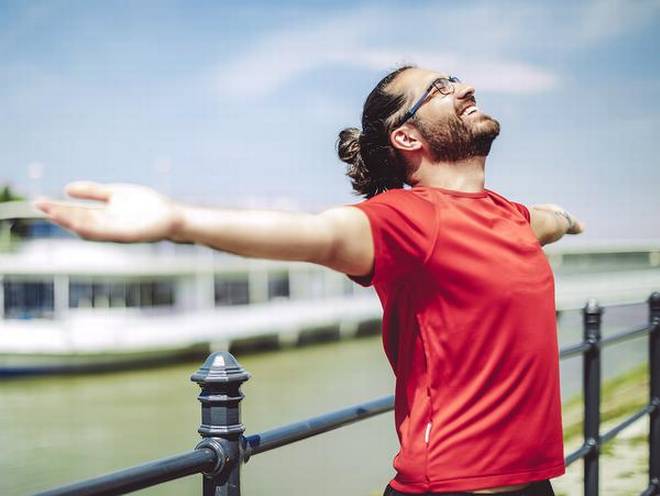reath, the foundation of life, is a powerful force that impacts not just our physical and emotive states, but also our flexibility and mobility
On average, a person at rest takes between 17,000 and 30,000 breaths a day. When you exert or exercise, this count further increases! For an activity performed so frequently and imperatively, it’s important to understand how to use breathing more efficiently in daily living, to power all our movement and activities.
Today’s fast-paced life presents many triggers and stressors, resulting in a continuous state of heightened stress arousal. This impacts all bodily functions and states, creating a cascade of lasting negative effects. It impairs our breathing pattern (making it more rapid and shallow), shifts recruitment of breathing muscles from optimal to compensatory, and creates stress in our muscles and joints. These interdependent changes alter motor control patterns that are responsible for driving mobility and give rise to musculo-skeletal aches, pains, predisposition to injuries and poor recovery.
Understand breathing
The diaphragm is a dome-shaped muscle, which separates the chest and abdominal cavities, and plays a dual role. Though it is the principal muscle of respiration, it also an important postural muscle. It works along with the abdominal muscles as a core stabiliser, providing stability to the trunk. This postural stability is essential for quality of all movement, simple or complex.
Whenever demand on breathing increases (activity or stress), the diaphragm’s respiratory role will take precedence over its postural one (since breathing is needed to stay alive). This creates some postural instability. With a typically under-utilised diaphragm, the body also relies excessively on supporting respiratory muscles to cope, resulting in shallower breathing. All this contributes to musculo-skeletal stress, creating movement dysfunctions!
No amount of strengthening of other muscles, including glutes and core, will be able to substitute for diaphragmatic support and function. Until we fully harness the power of diaphragmatic breathing, we will remain exposed to inefficiency of movement and ineffective rehabilitation from pain and injuries. Low back pain, shoulder and neck pain are common, yet ill-recognised, manifestations of the breath-stress correlation.
Breathing influences our pain perception too. Relaxation (calmer breathing) lowers it, while chronic pain (stress) makes us more sensitive. So how do we distinguish between shallow and deeper breathing, and how can we better recruit breathing muscles to normalise breathing patterns?
Practising deep breathing
In shallow breathing, much of the activity is restricted to the chest area, and only a small amount of air goes in and out of lungs, leading to carbon-dioxide build-up. It’s involuntary. Deeper breathing is conscious breathing (travelling down to the stomach) allowing the lungs to accommodate more air. The goal is to practise effective breathing, so it becomes habitual. Here is a simple practice to develop deep, diaphragmatic breathing:
Lie down on your back, knees bent. Relax the neck and shoulder muscles.
If needed, keep a rolled towel or small pillow under the neck to support it. Place one hand on the chest and one under the ribs (elbows relaxed). This will allow you to feel the diaphragm move as you breathe.
Breathe in slowly through your nose, feeling the air expand the chest, moving down towards the stomach, so that the stomach moves against your hand. Hold it for a few seconds. Exhale slowly through pursed lips, gently tightening stomach muscles, allowing them to move inwards. Let the lungs empty fully. Initially, there may be pauses between exhalations to fully expel the air, which is fine.
Inhale and exhale deeply without much force or stress. Build to a smoother rhythm of deeper breathing.
Begin by practising this exercise for eight-10 breaths twice a day, or five-six breaths three-four times during the day. Slowly increase the length of inhalations and exhalations.
As you gain more experience performing this technique lying down, you can then perform it seated, and eventually standing, and while performing movement. The breath then becomes a fuel for mobility.








